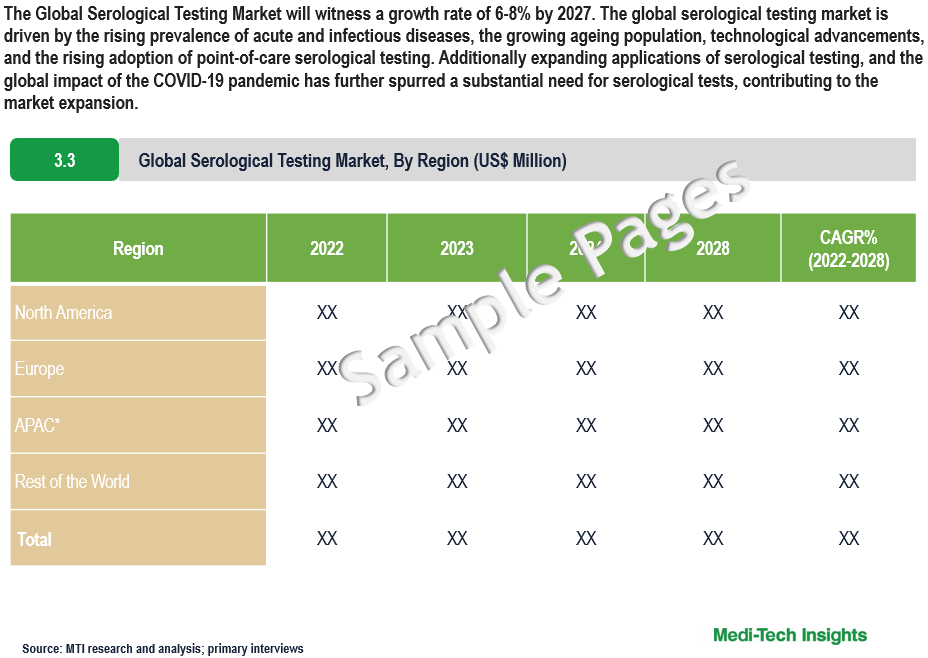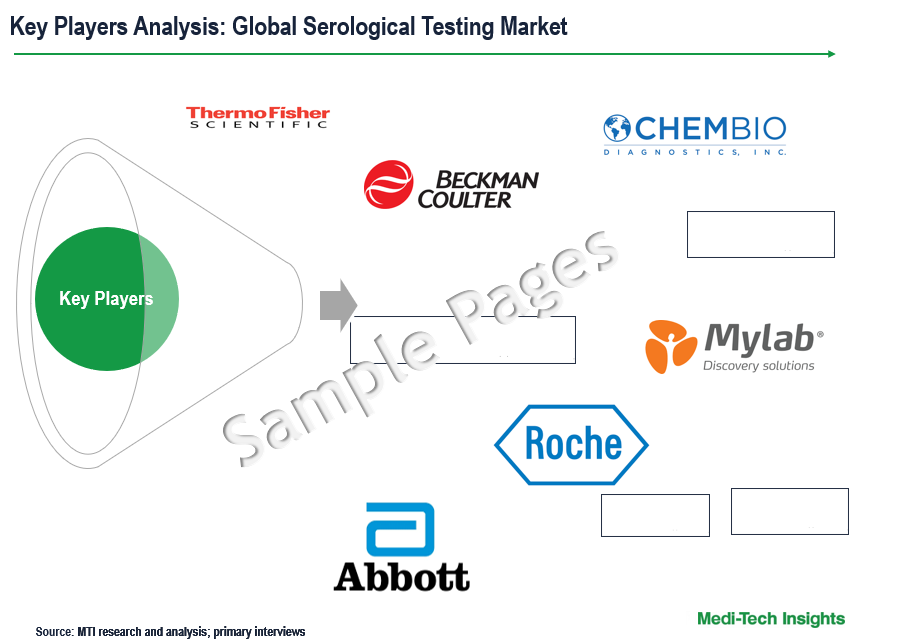
Serological Testing Market – Global Industry Analysis, Size, Share, Growth and Forecast to 2028
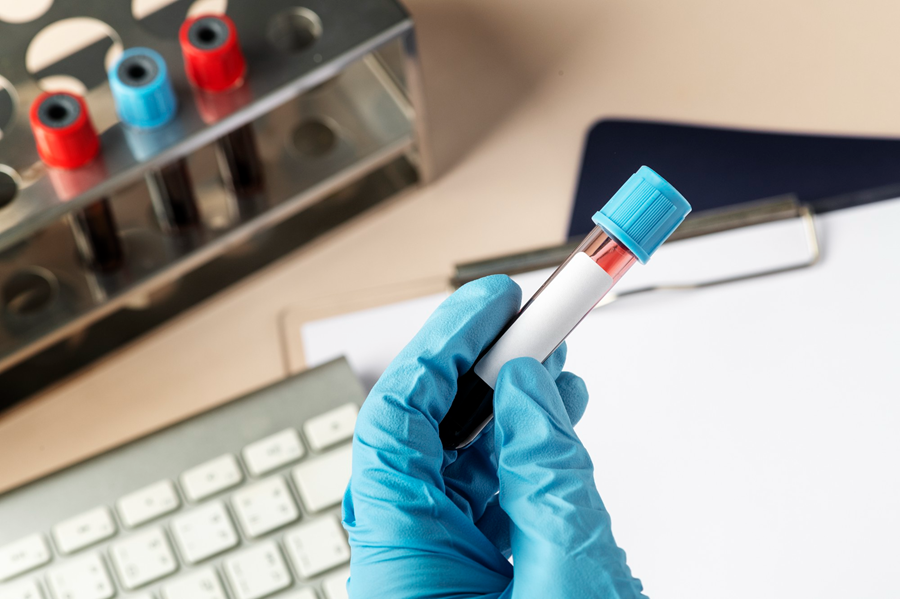
The Global Serological Testing Market will witness a growth rate of 6-8% by 2027. The global serological testing market is driven by the rising prevalence of acute and infectious diseases, the growing ageing population, technological advancements, and the rising adoption of point-of-care serological testing. Additionally expanding applications of serological testing, and the global impact of the COVID-19 pandemic has further spurred a substantial need for serological tests, contributing to the market expansion. To learn more about the research report, fill out a quick inquiry for a sample report.
Serological testing refers to diagnostic methods that involve analyzing blood serum to detect the presence of specific antibodies, antigens, or other substances that indicate the presence of a particular infection, condition, or immune response. Serum is the liquid component of blood that remains after blood clots, and it contains various proteins, including antibodies produced by the immune system. Serological tests are commonly used to identify antibodies the immune system produces in response to infections. These tests can determine whether a person has been exposed to or is currently infected with a particular pathogen, such as a virus or bacterium. Serological testing helps assess the immune status of individuals, indicating whether they have developed immunity to a specific disease through vaccination or previous exposure. Serological testing plays a pivotal role in blood typing, crucial for blood transfusions and organ transplants, and determining blood group and Rh factor. The techniques for serological testing include ELISA, Western blot, agglutination tests, and fluorescent antibody tests, serving as invaluable tools in clinical laboratories for diagnosing and monitoring various medical conditions. Interpretation of results often requires consideration of the patient's clinical history, symptoms, and other diagnostic information.
Serological Testing Market Dynamics: Trends, Automated Systems, and Demographic Influences
Several notable trends are shaping the landscape of the serological testing market including the rise in the prevalence of acute and infectious diseases. This trend underscores the essential role of serological tests in diagnosing and monitoring various health conditions, contributing to the market's growth. Another prominent trend is the increasing adoption of automated serological testing systems. These systems are designed to deliver faster and more accurate results, enhancing efficiency in diagnostic processes.
The global demographic shift towards an ageing population influences the demand for serological testing. As the elderly population grows, there is an increased need for diagnostic tools to address age-related health concerns, driving the market forward. There is an increasing emphasis on preventive healthcare, and serological tests play a vital role in early detection and prevention. This trend drives the adoption of serological testing as part of routine health check-ups and preventive healthcare measures. Growing investments in healthcare infrastructure and diagnostics, which include serological tests, play a pivotal role in fostering market growth. The adaptability and resilience of the healthcare sector, particularly in the context of global challenges like pandemics, are fostering innovation in serological testing. This adaptability ensures that the market evolves to meet the ever-changing requirements of healthcare systems globally.
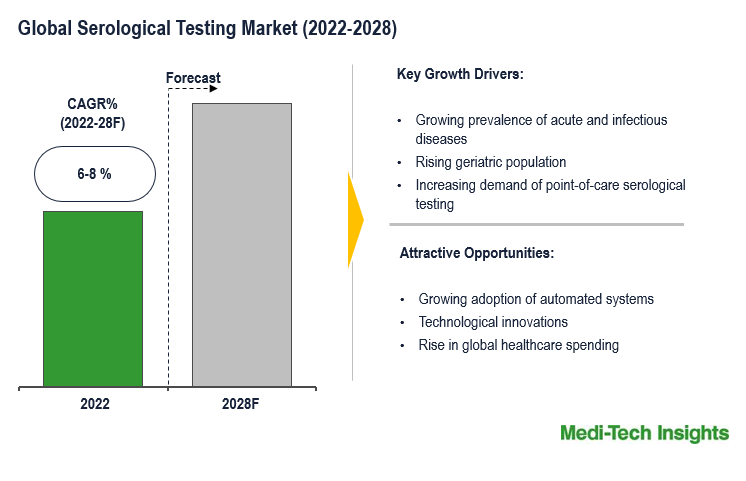
Fill out the "Quick Inquiry Form" to request a sample copy.
Serological Testing: Advancements, Point-of-Care Revolution, and Digital Integration
The global impact of the COVID-19 pandemic has been particularly significant, shaping the diagnostics industry, with a substantial need for serological tests to detect SARS-CoV-2 antibodies, crucial for understanding immunity and exposure. The demand for serological testing has increased, driven by the need for accurate and efficient diagnostic tools for infectious diseases, autoimmune disorders, and other medical conditions. For instance,
- In November 2023, Roche introduced Elecsys® HBeAg quant, an immunoassay capable of simultaneously detecting the presence and measuring the quantity of the hepatitis B e antigen (HBeAg) in human serum and plasma. This new assay enables patients to receive confirmation regarding the presence and extent of hepatitis B (HBV) when combined with other laboratory results and clinical information.
Serological testing applications are expanding, encompassing areas such as cancer marker detection, monitoring inflammatory markers, and assessing immunity status for vaccination programs. Ongoing research and development efforts within the field aim to elevate the sensitivity, specificity, and multiplexing capabilities of serological tests. There is a discernible focus on developing serological tests for autoimmune diseases, facilitating early diagnosis and monitoring of conditions such as rheumatoid arthritis and lupus. Another noteworthy development is the increasing adoption of point-of-care serological testing, enabling swift and convenient testing at the patient's location, a critical aspect, particularly in infectious disease screening. For instance,
- In August 2021, Mylab Discovery Solutions collaborated with Hemex Health, a U.S.-based medical diagnostic device company dedicated to creating transformative global health products. The partnership aims to create advanced diagnostic solutions for Point-of-Care (POC) testing of coronavirus and various diseases. In this technology collaboration, Mylab will focus on developing test assays, while Hemex will contribute its Gazelle POC testing platform and expertise.
Furthermore, the integration of serological testing with healthcare information technology (IT) systems is rising. This integration facilitates seamless data management, electronic health record integration, and improved connectivity across healthcare settings.
Key Constraints/Challenges
Key restraining factors in the global serological testing market growth include the high costs associated with the implementation of test equipment and lack of skilled professionals, security and privacy concerns related to handling sensitive patient information, implementing quality control measures, keeping pace with rapid technological advancements and challenges in integrating serological testing with Electronic Health Records (EHR) systems. These factors impede the seamless adoption and expansion of serological testing solutions in the healthcare industry.
North America Accounts for the Largest Share of the Global Market
The global serological testing market is categorized into North America, Europe, Asia Pacific, and the Rest of the World. North America holds a leading position in the market, primarily attributed to the rising prevalence of infectious diseases, a robust healthcare infrastructure, favourable government policies, technological advancements and an increasing elderly population in the region. The Asia-Pacific region is anticipated to exhibit the highest growth rate during the forecast period. Key drivers contributing to this growth include a rising incidence of chronic and infectious diseases, heightened awareness among the population, and an increase in healthcare expenditure. This signifies a dynamic market landscape with varying regional influences and growth potentials.
Competitive Landscape
Major players included in the Serological Testing Market are Serological Research Institute (SERI), Chembio Diagnostic Systems, Inc., Cellex Inc., Advanced Diagnostics, Inc., Randox Laboratories Ltd., Eurofins Scientific, Abbott, BD, F. Hoffmann La-Roche Ltd., ELITechGroup, Immucor Inc., Thermo Fisher Scientific, Inc., Beckman Coulter, Inc., BioMedomics Inc., and Creative Diagnostics among others.
Organic and Inorganic Growth Strategies Adopted by Players to Establish Their Foothold in the Market
Players operating in this market are adopting both organic and inorganic growth strategies such as collaborations, and acquisitions to garner market share. For instance,
- In November 2023, Roche unveiled automated serology tests for the hepatitis E virus (HEV), encompassing a diagnostic assay designed to identify acute HEV infections. The test aligns with the recommendations outlined in the recently updated 2023 Essential Diagnostics List by the World Health Organization (WHO)
- In July 2023, Siemens Healthineers introduced the Atellica CI Analyzer, a compact testing system designed to address laboratory challenges. This analyzer is strategically engineered with unique features to optimize downtime, enhance laboratory efficiency, and improve profitability. Key capabilities, including random access sampling, micro-volume aspiration, and automated maintenance and quality control scheduling, empower labs to achieve more predictable sample turnaround times.
The market is expected to continue to grow due to the increasing emphasis on preventive healthcare, rising demand for serological test services, technological innovations, and aggressive organic and inorganic growth strategies followed by the players.
Key Strategic Questions Addressed
- What is the market size & forecast for the Global Serological Testing Market?
- What are the historical, present, and forecasted market shares and growth rates of various segments and sub-segments of the Global Serological Testing Market?
- How has COVID-19 impacted the Global Serological Testing Market?
- What are the major growth drivers, restraints/challenges impacting the market?
- What are the opportunities prevailing in the market?
- What is the investment landscape?
- Which region has the highest share in the global market? Which region is expected to witness the highest growth rate in the next 5 years?
- Who are the major players operating in the market? What is the competitive positioning of key players?
- Who are the new players entering the market?
- What are the key strategies adopted by players?
- Research Methodology
- Secondary Research
- Primary Research
- Market Estimation
- Market Forecasting
- Executive Summary
- Market Overview
- Market Dynamics
- Drivers
- Restraints
- Market Dynamics
Key Market Trends
- Industry Speaks
- Key Revenue Pockets
- Global Serological Testing Market - Size & Forecast (2019-2027), By Test Type
- Primary Serological Tests
- Secondary Serological Tests
- Global Serological Testing Market - Size & Forecast (2019-2027), By Application
- Hepatitis
- Coronavirus (COVID-19)
- Human Immunodeficiency Virus (HIV)
- Rotavirus Infection
- Others
- Global Serological Testing Market - Size & Forecast (2019-2027), By End User
- Hospitals
- Diagnostic Centers
- Academic & Research Institutes
- Others
- Global Serological Testing Market - Size & Forecast (2019-2027), By Region
- North America (U.S. & Canada)
- Europe (UK, Germany, France, Italy, Spain, Rest of Europe)
- Asia Pacific (China, India, Japan, Rest of Asia Pacific)
- Rest of the World (Latin America, Middle East & Africa)
- Competitive Landscape
- Key Players and their Competitive Positioning
- Competitive Positioning of Key Players (2022)
- Offerings Assessment, By Player
- Key Strategies Assessment, By Player (2021-2023)
- New Product & Service Launches
- Partnerships, Agreements, & Collaborations
- Mergers & Acquisitions
- Geographic Expansion
- Key Players and their Competitive Positioning
- Key Companies Scanned (Indicative List)
- Serological Research Institute (SERI)
- Chembio Diagnostic Systems, Inc.
- Cellex Inc., Advanced Diagnostics, Inc.
- Randox Laboratories Ltd.
- Eurofins Scientific
- Abbott
- BD
- Hoffmann La-Roche Ltd.
- ELITechGroup
- Immucor Inc.
- Thermo Fisher Scientific, Inc.
- Beckman Coulter, Inc.
- BioMedomics Inc.
- Creative Diagnostics
- Other Prominent Players
Research Methodology
The study has been compiled based on extensive primary and secondary research.
Secondary Research (Indicative List)
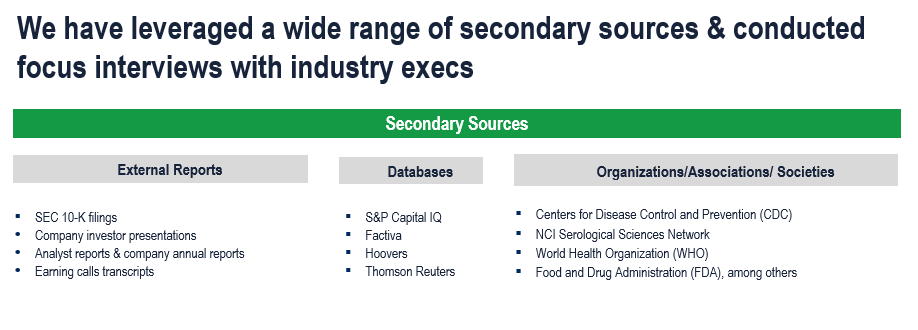
Primary Research
To validate research findings (market size & forecasts, market segmentation, market dynamics, competitive landscape, key industry trends, etc.), extensive primary interviews were conducted with both supply and demand-side stakeholders.
Supply Side Stakeholders:
- Senior Management Level: CEOs, Presidents, Vice-Presidents, Directors, Chief Technology Officers, Chief Commercial Officers
- Mid-Management Level: Product Managers, Sales Managers, Brand Managers, Business Development Managers, Consultants
Demand Side Stakeholders:
- Stakeholders in Hospitals, Diagnostic Centers, Academic & Research Institutes and Other End Users
Breakdown of Primary Interviews

Market Size Estimation
Both ‘Top-Down and Bottom-Up Approaches’ were used to derive market size estimates and forecasts.
Data Triangulation
Research findings derived through secondary sources & internal analysis were validated with Primary Interviews, Internal Knowledge Repository, and Company Sales Data.
